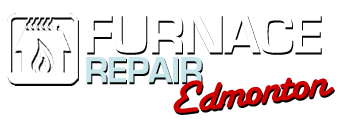Homeowners Guide: How to Troubleshoot a Furnace
 No need to panic once your heating system breaks down as long as you know how to troubleshoot a furnace.
No need to panic once your heating system breaks down as long as you know how to troubleshoot a furnace.
You’d be surprised at how time flies so fast. The same thing can be said with the changing of the seasons. One time it’s hot and humid, the next time it’s cold and freezing outside. It pays to be handy at home and knows how a furnaces works. You no longer have to pay for expensive emergency furnace services or endure a cold and drafty home. Check out the following nine simple tasks you can do yourself on how to troubleshoot a furnace without the help of an expert. During times of distress, every second counts.
1. Ensure that you set the thermostat to “heat.”
A lot of people often overlook this step, but many times, it is the reason why your home has no heating all of a sudden. Remember that the first step before doing any troubleshooting is to check whether you have set the thermostat to “heat.” You’d be surprised at the number of times and ways it can change throughout the day.
Also, bear in mind to set it at a temperature that can turn on your furnace. Spare several minutes for the fan to work and the heat to kick in.
2. Check the air filter.
The most common reason you have a furnace issue is because of the air filter. Most of the time, homeowners forget to replace their furnace filters. It can become dirty and clogged, significantly restricting the airflow. Most modern furnaces have built-in features that can detect the issue and shut down on its own before the filter starts messing the furnace’s operation. Other older units will keep on running but start to show signs of reduced efficiency.
To find out you are having furnace filter issues, check the filter. Homeowners are encouraged to replace their filters each month, so they no longer forget about it all the time. You can also tell if it’s a filter issue if you can hear whistling sounds. It signals that your furnace has a hard time of getting sufficient air via the filter, so it pulls air over any opening it can manage to find.
3. Replace batteries.
Most thermostats are connected to the electrical system of the house, while there are others that are battery-operated. Some models flash a “low battery” warning, but they often go unnoticed. Thus, don’t forget to replace your batteries with fresh ones every now and then.
4. Is your furnace getting power?
Check that your furnace is receiving power. A lot of thermostats come with a switch that says “On” or “Auto” wherein the fan automatically kicks in once you turn on the unit. Make sure it is set to “on.” You’re good to go once the fan turns on. You have a problem if it doesn’t.
5. Look for the circuit breaker.
If you’re still clueless on the cause of the problem, here’s another tip on how to troubleshoot a furnace. Check the breaker panel of your home and search for the circuit controlling the furnace. Check whether it’s set to “on” or “off.” There are those that shows red. There are electricians who do not label household appliances properly. The furnace switch is often the different one from the rest. Turn it off and back on to fix it.
6. Throw another switch.
There is another switch known as the “furnace switch.” It mostly resembles a typical switch. You can find it on the unit itself or a nearby wall. However, many homeowners often confuse this switch with a light switch and turn it off by accident. Throw this furnace switch and wait several minutes for it to work.
7. Break the code.
Furnaces made in 1990 or later years come with a small window where light can show through. This light indicates whether a furnace has power or flashes a code to let you know what is wrong with your furnace.
After turning the furnace switch on and off, observe the flashing light sequence. Next, open the access panel. Inside one of the two panels will let you know the meaning of the code. It can help a technician determine the problem in case your furnace still won’t work.
8. Follow the light.
For furnaces with pilot lights, check the owner’s manual on how you can relight it. But if you’re not comfortable in doing it, call an expert to do it for you.
9. Inspect the gas valve.
If nothing seems to work, inspect the gas valve to ensure that it’s not turned off. All gas furnaces come with a “gas cock” that you can find within six feet of your furnace. You can still check it even if most of the time it remains untouched. If there are other gas appliances in your home, check whether they are working or not. If they do, at least you know there’s nothing wrong with your home’s gas line.
As long as you are eager to learn how to troubleshoot a furnace, try your best to fix it. But if nothing works and you’re no longer comfortable in doing the repair yourself, you can always call a furnace expert to intervene. Make it a point to schedule your furnace for regular check-up and maintenance at least yearly during autumn. This precautionary measure isn’t that expensive, around $100 or so, and will benefit you and your furnace in the long run.
